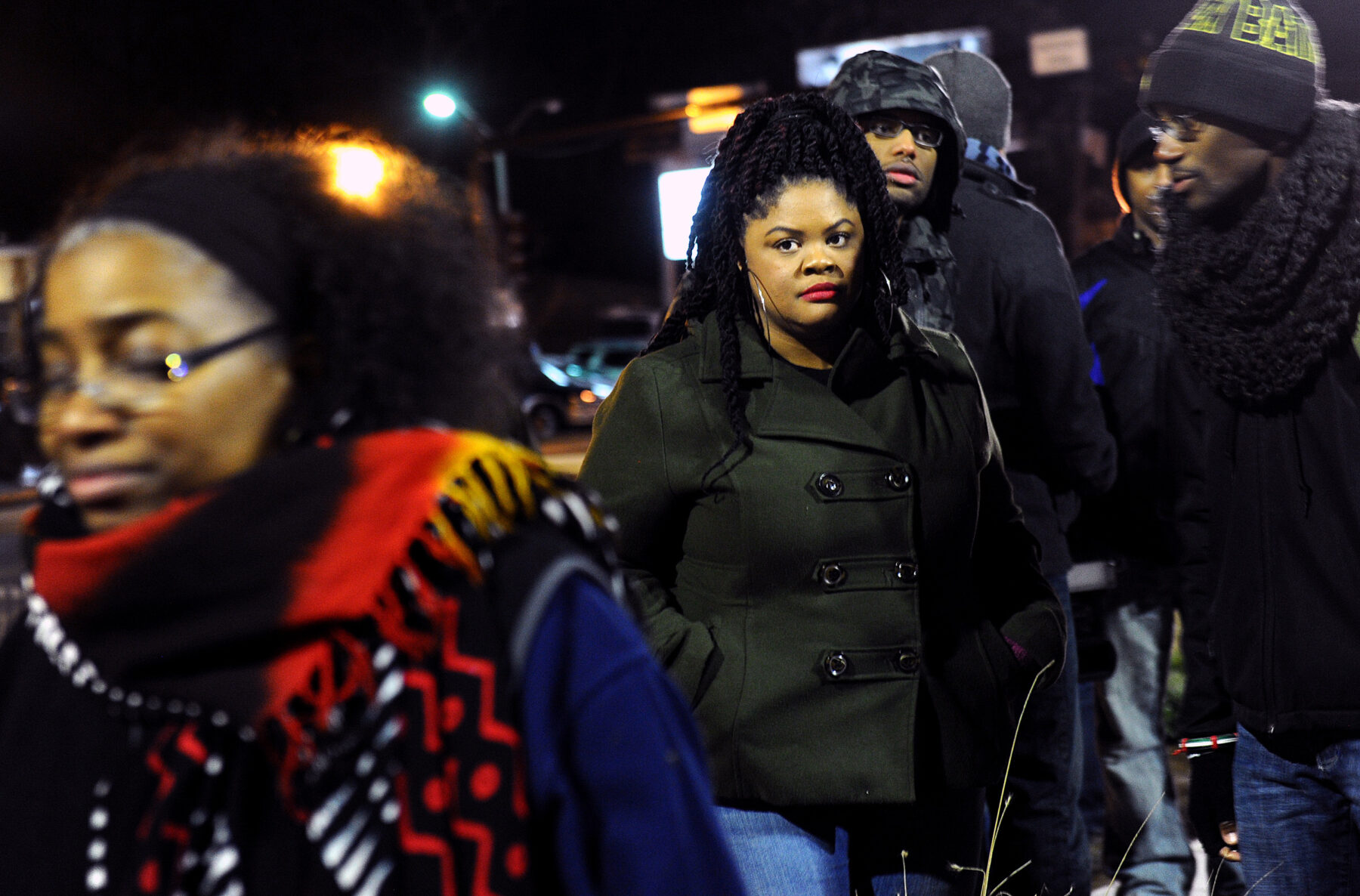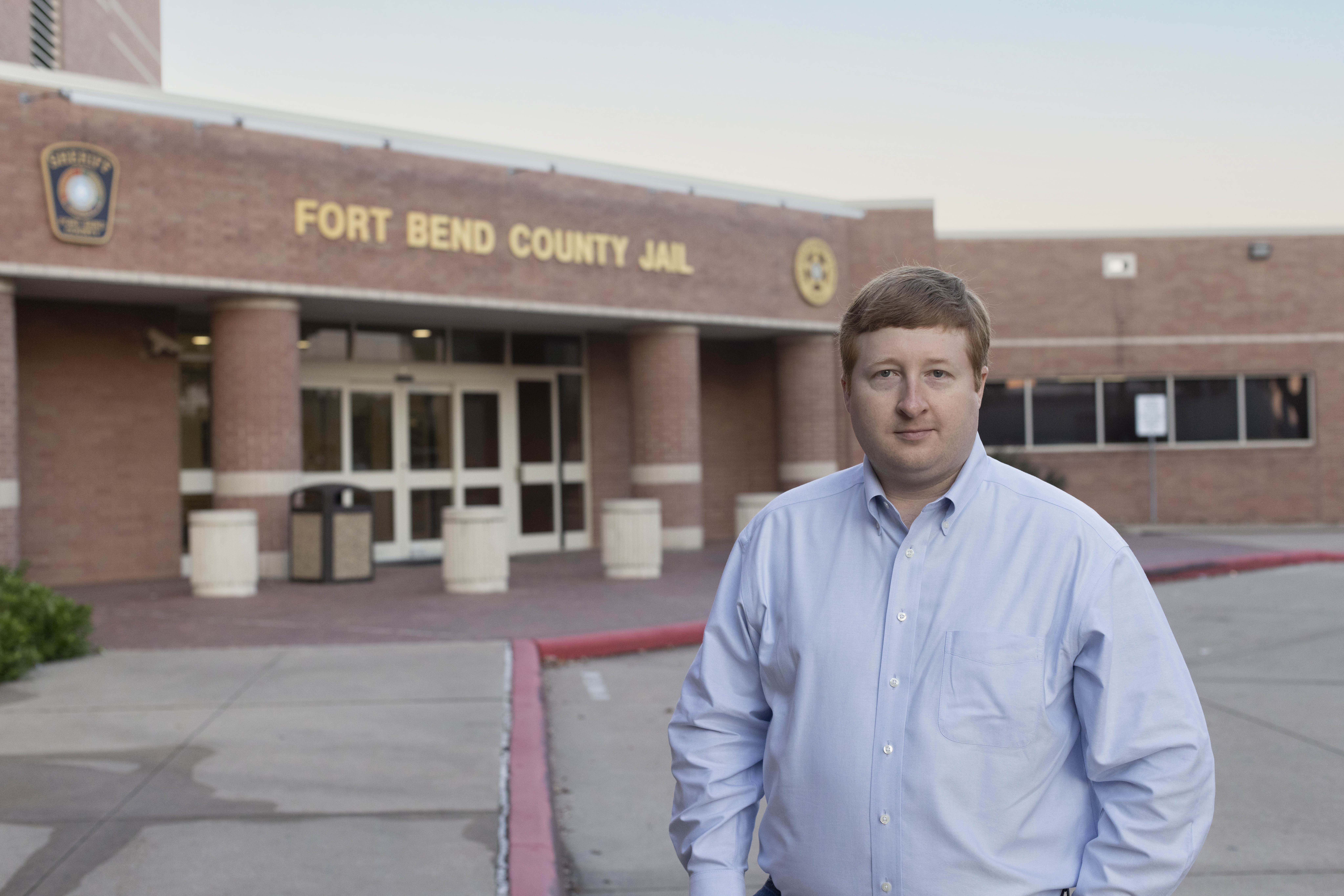
Johnetta “Netta” Elzie was one of the first people to tweet from the scene in Ferguson, Missouri, after a police officer killed unarmed Black teen Michael Brown in 2014.
“It’s still blood on the ground where Mike Brown Jr was murdered,” she wrote. “A cone in place where his body laid for hours today.”
Elzie, who studied journalism in college, said she was troubled by some of the media’s racialized coverage of Brown — a New York Times profile described him as ”no angel” (the Times public editor later called it a “regrettable mistake”) — and its nuanced, humane portraits of the cop who fatally shot him. So she took to Twitter during the weeks-long Ferguson protests that followed Brown’s killing. In videos, photos and tweets, she captured the Black Lives Matter movement in its early days, providing an unfiltered look at a community’s anguish and the increasingly violent confrontations between organizers and the police.
Reports on the ground in Ferguson by Elzie and other organizers proved to be a turning point for digital media: They demonstrated the power of citizen reporting to hold the police accountable in real time.
“The media has worked to be the mouthpiece for the state and state violence,” said Elzie, 34. “Because of Twitter, people online [began] pushing publications to address things from a fair point of view.”
Nearly a decade later, Elzie said the revolution she and her peers started on Twitter is “in shambles.” Like many organizers, she’s disillusioned by Elon Musk’s takeover of the platform, now known as X, and what researchers say is a resulting rise in hate speech and misinformation. While the app can still be an effective tool for local activists and journalists to document police violence, it no longer facilitates movement building at a national scale, she said.
“I wish we had that energy, that great storytelling we had in 2014,” she said. “I wish there was less care about what the establishment thinks.”
Traditional journalism has yet to harness the potential of community-powered storytelling, experts say. Rather than developing partnerships with engaged citizens to fill coverage gaps or produce more complex reporting, journalists have instead used social media as fodder for ideas, churning stories from viral clips people captured from the ground.
“The traditional journalism world has not been particularly eager to welcome the public into the process,” said Dan Gillmor, a professor at Arizona State University’s Walter Cronkite School of Journalism & Mass Communication whose book “We the Media” chronicles the rise of citizen journalism. “There’s a whole parallel universe of news they don’t think about and don’t want to be a part of.”
In a time of budget cuts and layoffs, community-led initiatives can be a solution to fill news vacuums and provide fresh perspectives on urgent social issues, Gillmor said.
Citizen journalists can fill the gaps in coverage
Despite the decline of Twitter, other social media platforms remain instrumental facilitators of citizen journalism. TikTok, Instagram and Snapchat users tend to pay more attention to influencers and ordinary content creators than to journalists when it comes to news, according to a 2023 report from the Reuters Institute for the Study of Journalism. TikTok has become an indispensable tool for citizens documenting the atrocities of Russia’s war on Ukraine.
Citizen journalists can break stories that traditional media don’t have access to or invest in. At the nonprofit newsroom Scalawag last summer, a white reporter and a Black farmer co-reported a feature about farming in Mississippi. Alabama citizen journalist James Watkins covers local government meetings in his hometown of Fairhope, a news desert.
In the coverage of certain beats, citizen journalists can hold an edge over professional reporters.

Justin Pulliam, a citizen journalist covering local police in Fort Bend, Texas, has carved out a niche in watchdog reporting by tracking calls on scanners and videoing law enforcement responses to welfare calls. He posts his recordings on Facebook and his YouTube channel, Corruption Report, which has more than 73,000 subscribers. Pulliam said the speed by which he obtains raw footage is an advantage that citizen journalists wield over established media.
“A lot of incidents I cover you can’t find anywhere else because the police don’t turn over their videos,” he said.
Yet compared to professional journalists protected by news organizations, citizen watchdog journalists can be more vulnerable to pushback and retaliation from authorities. Pulliam was arrested for videoing a confrontation between officers and a mentally ill man and was ejected from a police press conference. Last year, he partnered with the Institute for Justice to sue Fort Bend County police for repeatedly violating his First Amendment rights. The case could proceed to trial next January, he said.
“This case is bigger than me,” he said. “I sued so we could protect the rights of everybody to report and criticize the police without the fear of retaliation and harassment and prosecution.”
Tiffany Fong, 29, began reporting on YouTube and Twitter about crypto crimes after the crash of crypto lender Celsius locked her out of more than $100,000 worth of assets. She swiftly gained tens of thousands of followers by delivering scoops like an exclusive interview with FTX founder Sam Bankman-Fried and leaks from former Celsius employees. Her interview with Bankman-Fried was referenced in a congressional hearing last December.
“Crypto natives have this distrust of mainstream media,” she said. “That leads to people wanting to talk to others within their own realm. Some told me they liked that I personally had skin in the game.”
Fong hasn’t figured out how to monetize her work and has declined sponsorships from crypto companies. She said she would be open to paid collaborations with media outlets but not at the cost of sacrificing creative freedom.
“I’d be happy to work with a publication if I can have free rein on how to portray a story,” she said. “If I have to clean up my act, that would be an issue.”
The pathway to collaboration
Another barrier to collaboration is money. Arizona State’s Gillmor said news organizations should establish some system of compensation to make citizen journalism sustainable. “In general, people should be treated to the extent possible as freelancers,” he said.

To forge paid partnerships with established newsrooms, several media nonprofits have launched efforts to train citizen journalists. The Documenters Network, established in Chicago in 2018, has trained more than 1,800 community members across seven cities to cover local government meetings and work with journalists to publish their findings.
The Center for Cooperative Media, a grant-funded program at Montclair State University in New Jersey, has launched several initiatives to boost citizen journalism in newsrooms across the state. In 2012, the center partnered with Jersey Shore Hurricane News to train citizens to cover the aftermath of Hurricane Sandy. The newer South Jersey Information Equity Project pairs Black storytellers with local outlets to produce solutions-based journalism.
Cassandra Etienne, the center’s assistant director for membership and programming, said today’s community-led race reporting harkens back to the early days of the Black press, when citizen journalists like Ida B. Wells played an instrumental role in chronicling the Civil Rights Movement. Citizen journalism will always have a place, she said.
“Wells started her work because of violence against Black people,” Etienne said. “She was telling stories because no one else was, because her community was ignored.”


